Net-Zero Hero: Tatianna Cannon
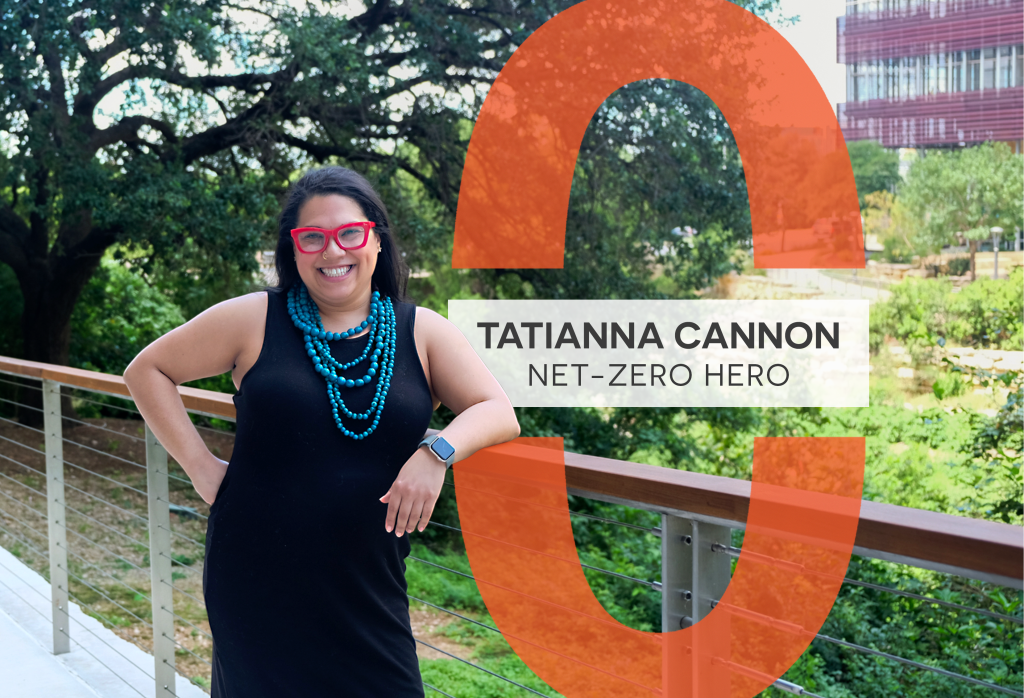
I’m helping to make Austin Net-Zero by building pathways into green careers for communities too often left behind.
Meet our newest Net-Zero Hero, Tatianna Cannon! A lifelong advocate for equity and access, Tatianna is the founder of the Green Workforce Collaborative — an initiative focused on building inclusive pathways into Austin’s growing green economy. Through partnerships, community organizing, and a people-first approach, she’s helping ensure the transition to net-zero creates opportunity for everyone, especially those historically left out of traditional career paths.
We met with Tatianna in downtown Austin to talk about her journey, how workforce development supports climate resilience, and why starting small — with simple, everyday actions — can be a powerful first step toward a more sustainable future.
What inspired you to take action?
My mom used to take us to the public library in every new city we moved to and say, “Readers are leaders.” I was always encouraged to dream big and break generational cycles. That belief — that knowledge and access should belong to everyone — is what drives me. I’ve worked across education, public health, and now climate, but the through-line has always been equity and access to what helps families and communities thrive. When I saw how few people from historically excluded communities were being connected to the economic opportunities of the green transition, I knew I had to do something about it.
How did you do it?
I founded the Green Workforce Collaborative to center equity in Austin’s climate strategy — not just in policy, but in practice as well. We secured $2.3 million in funding to build inclusive pathways into green jobs, especially for folks who are unhoused, system-impacted, or shut out of traditional career routes. We partner with local orgs, employers, and training programs to make sure this transition to net-zero leaves no one behind.
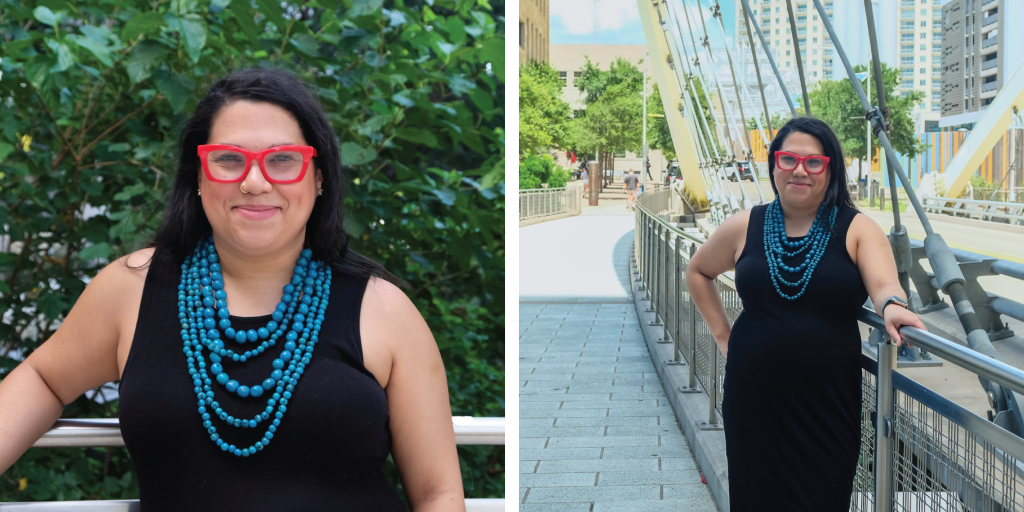
Left: Tatianna smiles for a headshot; Right: Tatianna poses on the butterfly bridge in downtown Austin.
What’s been most rewarding about getting involved in this way?
It’s been incredibly rewarding to see people realize they belong in the climate space. Whether it’s a young person planting their first tree or a returning community member landing a job in solar, those moments remind me that the green economy has the power to heal, restore, and uplift. It’s also such a privilege and joy to raise funds that can be directed back into small, grassroots orgs that are most embedded in and aligned with the communities we serve. I believe that “rising tides raise all ships,” and this abundance mindset has allowed me to dream up really beautiful and accessible opportunities for folks who might not otherwise have the tools or knowledge to seek those out themselves.
What’s been the toughest part?
Changing systems is hard — especially when they weren’t built for equity in the first place. There are days when it feels like pushing a boulder uphill. Someone recently told me that if this was easy work, then someone would have already done it. And that really resonated. But I’ve learned that grit, community, and a good laugh go a long way. Celebrating small wins and centering joy is a vital component of any community-centered work, so I’ve sought to build an internal culture that makes space for joy, especially when times seem toughest.
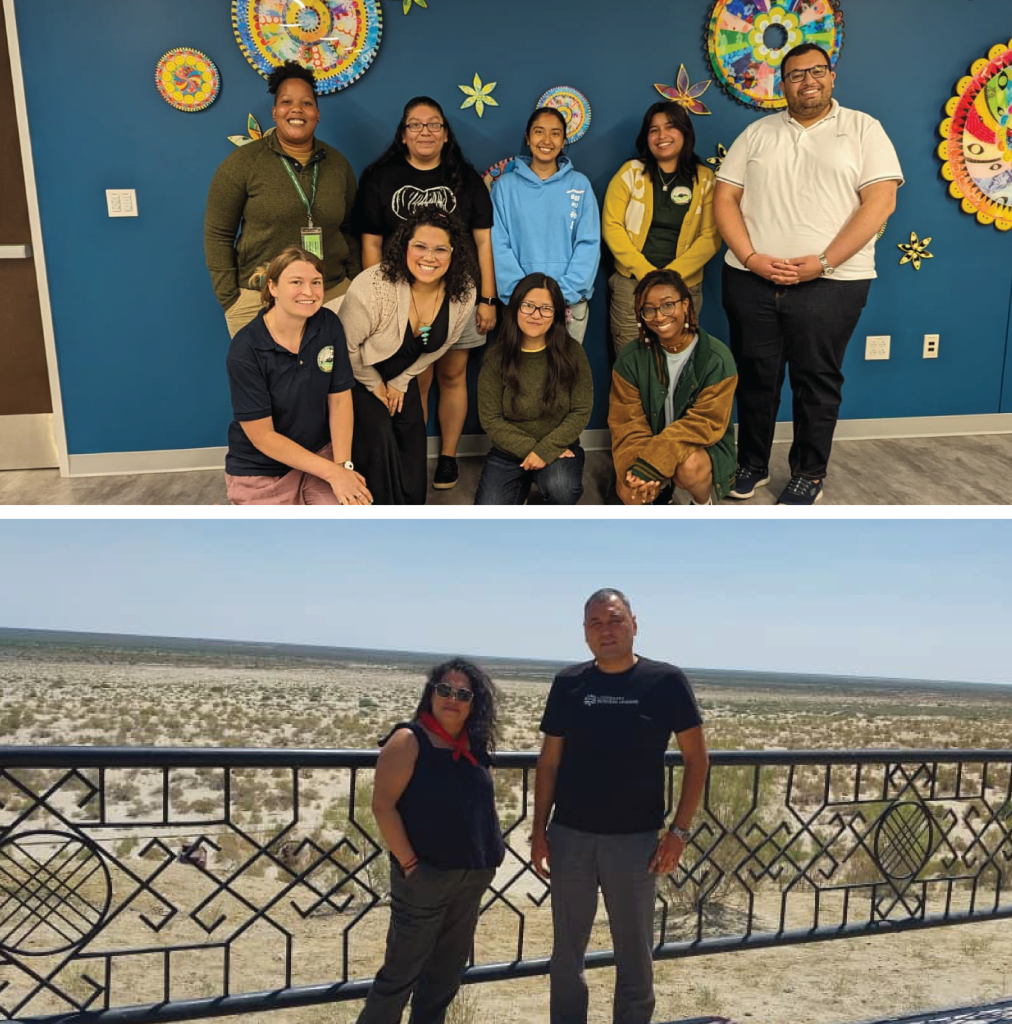
Top: Tatianna smiles with City of Austin employees at International Reciprocal Exchange Program Participant meeting; Bottom: Tatianna and Amangeldi Nurmanbetov in Uzbekistan working to expand green workforce initiatives.
What role does workforce development play in creating a more climate-resilient Austin?
Workforce development is climate resilience. It’s how we turn policy into lived experience — by training the local talent who will focus on sustainable agriculture, build infrastructure, work to ensure we have abundant access to clean water, and repair our relationship to the land. It’s also how we future-proof our economy by investing in people, not just technology.
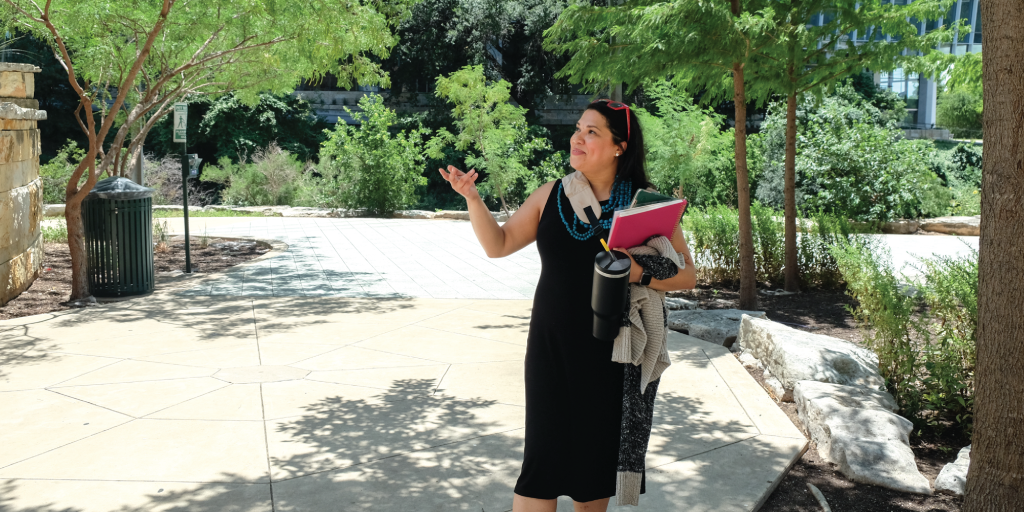
Tatianna shows us around the area where Green Workforce Development will be hosting an event soon.
How can local organizations better support green pathways for aspiring professionals?
I always say that almost everyone wants to impact climate resilience and/or help the environment, but few people know what that even looks like in practice. Should I just plant a tree? Use a reusable water bottle? I always encourage folks to start where they are and focus on what drives their passions because everything truly does make a difference.
Some more tactical ways to support:
- Pay people to learn. Stipends and paid training reduce barriers.
- Partner with grassroots orgs already doing the work. Donate to support this work or offer your time or talent through volunteering.
- Fund operational needs and wraparound support — transportation, childcare, mental health — all of it matters.
- Center people who’ve historically been excluded and let them lead.
What advice do you have for others?
Start where you are. You don’t need to be an expert or have it all figured out to make a difference. This work takes everyone — dreamers, doers, organizers, number-crunchers, storytellers. Find your lane and bring others with you.
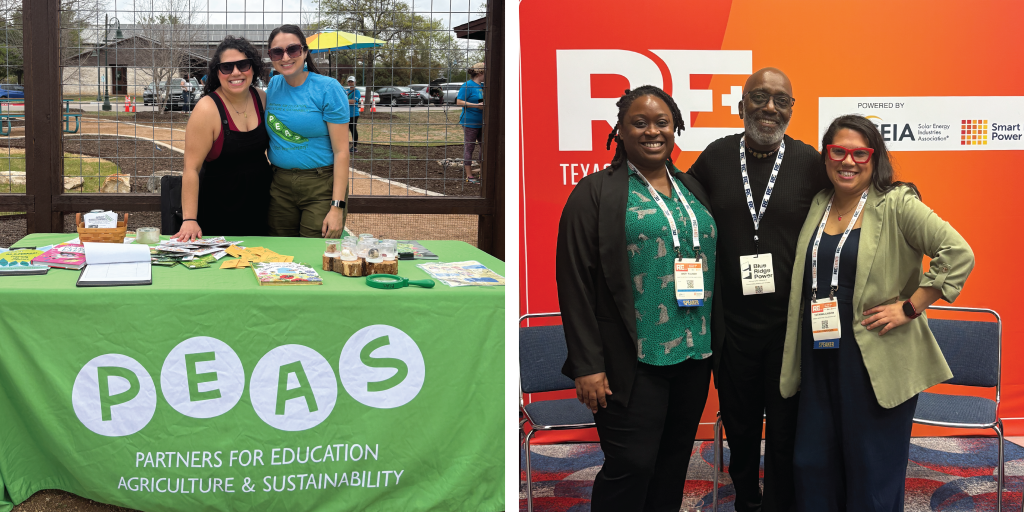
Left: Tatianna tabling at community event with Azalia Rodriguez for “PEAS: Partners for Education Agriculture and Sustainability”; Right: Tatianna smiles with Mary Palmer and Kenneth Thompson at RE+ Texas 2025.
Is there a book, documentary, or other piece of media you would recommend for folks wanting to learn more about these topics?
I would recommend the book, All We Can Save, by Ayana Elizabeth Johnson and Katharine Wilkinson. It’s a beautiful, intersectional collection of essays by women leading the climate movement. It’s brain food and soul balm. Adrienne Marie Brown is also one of the most exceptional organizers around and has so many great resources.
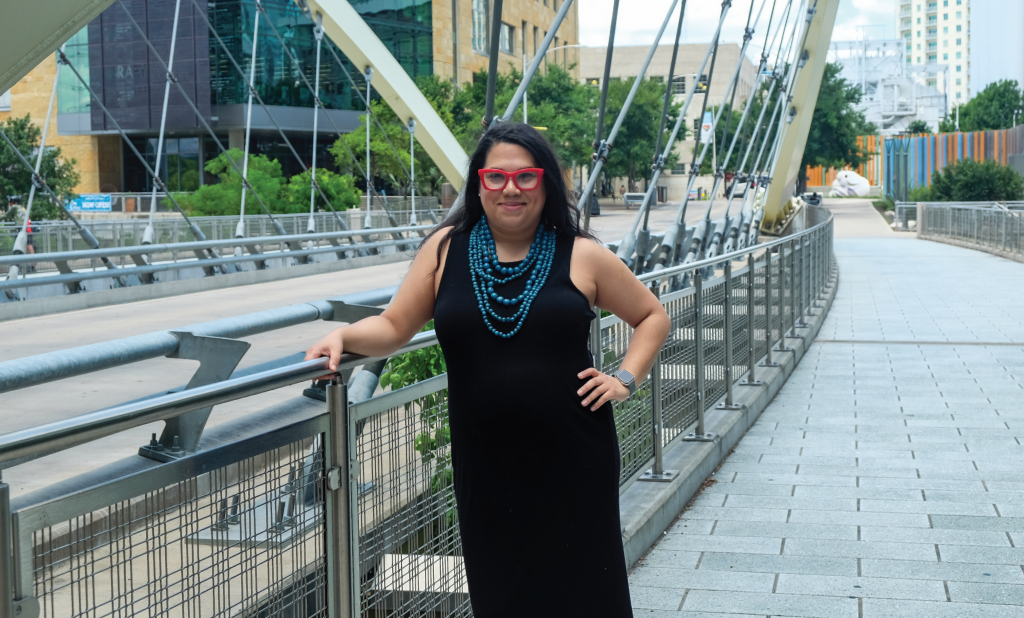
Tatianna’s work is a powerful reminder that sustainability must include equity, opportunity, and community voice at every step. To learn more about how Tatianna is working to cultivate a vibrant, sustainable, and accessible green workforce, visit the Green Workforce Collaboration website. By investing in people and creating pathways for all Austinites to take part in the net-zero transition, we move closer to a future where everyone can thrive.
To learn more about Austin's net-zero goal and the actions you can take to support a greener community, view the Austin Climate Equity Plan.
Share your Net-Zero contributions with us on Facebook or X, and use #NetZeroHero. If you know a Net-Zero Hero (or heroes!) who should be recognized for their efforts, send your nomination to climate@austintexas.gov.

